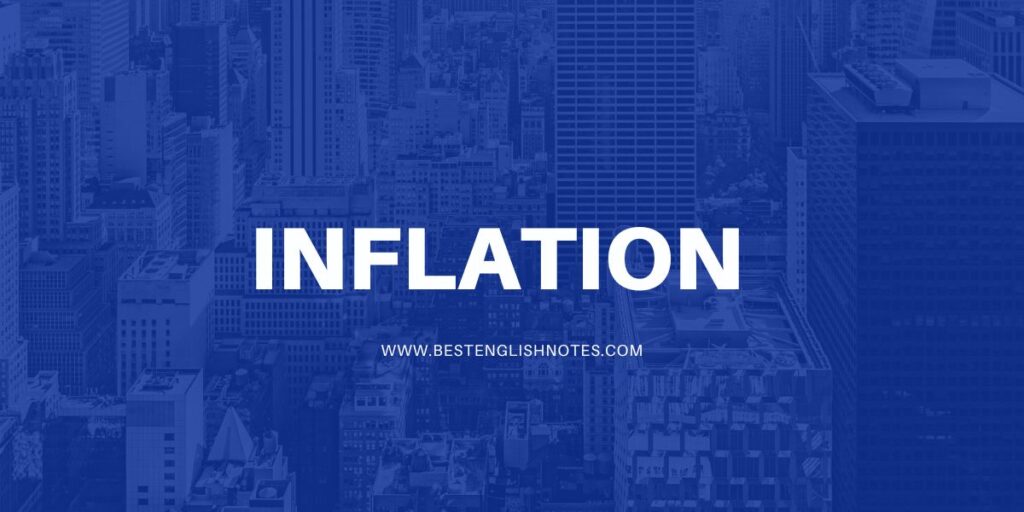Essay On Inflation
Inflation is an important economic concept that affects everyone from consumers to businesses and governments. In simple terms, it refers to a general increase in prices and a decrease in the purchasing power of money. Understanding inflation and its effects is essential to making informed financial decisions and understanding how the economy works. This essay on inflation will explore its causes, effects and ways to manage it, providing a clear and comprehensive overview of this important economic phenomenon.

Introduction
Inflation means prices of things like groceries and services go up over time. This means your money doesn’t buy as much as it used to. For instance, if prices go up by 3%, something that costs $100 now would cost $103 next year. Inflation is normal in an economy, but too much can cause problems. We measure inflation using things like the Consumer Price Index (CPI) and Producer Price Index (PPI).
Causes of Inflation
Inflation can happen for several reasons:
- Demand-Pull Inflation: This happens when people want to buy more goods and services than are available. For example, during a strong economy, people have more money to spend, and prices rise.
- Cost-Push Inflation: This happens when the cost of making goods increases. For example, if the price of oil rises, it costs more to transport and produce goods, so prices rise.
- Built-In Inflation: This happens when workers demand higher wages because the cost of living is rising. Businesses then raise prices to compensate for higher wages, creating a cycle. This is common in places where labor unions are strong.
- Monetary Inflation: This happens when there is a lot of money in circulation. For example, if a country prints too much money, the value of money falls, and prices rise. Zimbabwe was a serious case in the late 2000s, where the money rapidly lost its value.
Effects of Inflation
Inflation affects the economy and people in many ways:
- Purchasing Power: As prices rise, the value of money falls. People can buy less for the same amount. For example, if inflation is 5% per year, a commodity that costs $100 today will be worth $105 next year.
- Savings and Investment: Inflation can reduce the value of savings. If the interest rate on savings is lower than inflation, money in the bank loses value. Borrowers benefit because they pay off the loan with a lower cost.
- Distribution of Income: Inflation affects people differently. Individuals on fixed incomes, such as retirees, may struggle because their incomes do not increase with prices. Those who have assets like property can see their wealth grow.
- Uncertainty and Planning: High inflation makes it difficult to plan for the future. Businesses may delay investment, and consumers may hesitate to spend as economic growth slows.
Solutions to Inflation
There are several ways to control inflation:
- Monetary Policy: Central banks can control inflation by adjusting interest rates and money supply. For example, rising interest rates make borrowing more expensive, reducing spending and cooling the economy. The US Federal Reserve uses this method.
- Fiscal Policy: Governments can reduce inflation by cutting spending or raising taxes. This reduces demand in the economy. During low inflation, they can spend more to boost demand.
- Supply-side policies: can help improve the economy’s ability to produce goods and services. Investments in infrastructure, technology and education make production more efficient and cheaper, which can lower costs.
- Income Policies: Sometimes, governments directly control wages and prices. This can be difficult and cause other problems, so it should be done carefully.
Conclusion
Inflation means increase in prices and decrease in purchasing power. This could be due to higher demand, rising production costs, rising wages, or too much money in the economy. Inflation affects savings, income distribution and economic planning. Solutions include controlling interest rates, adjusting government spending and taxes, and improving production efficiency. By carefully managing inflation, economies can remain stable and grow.
